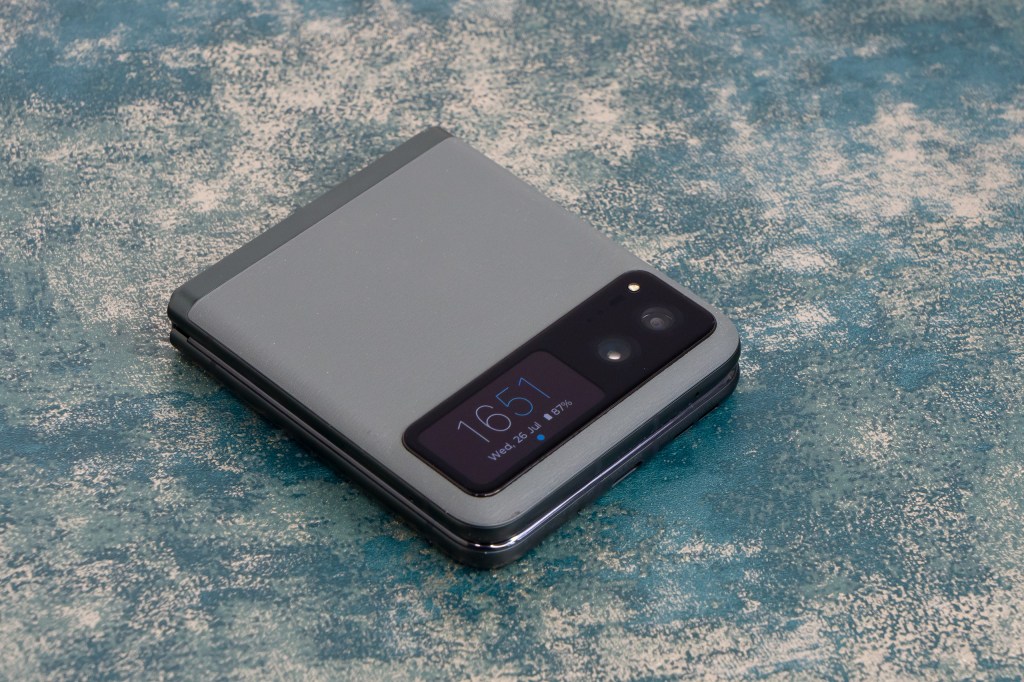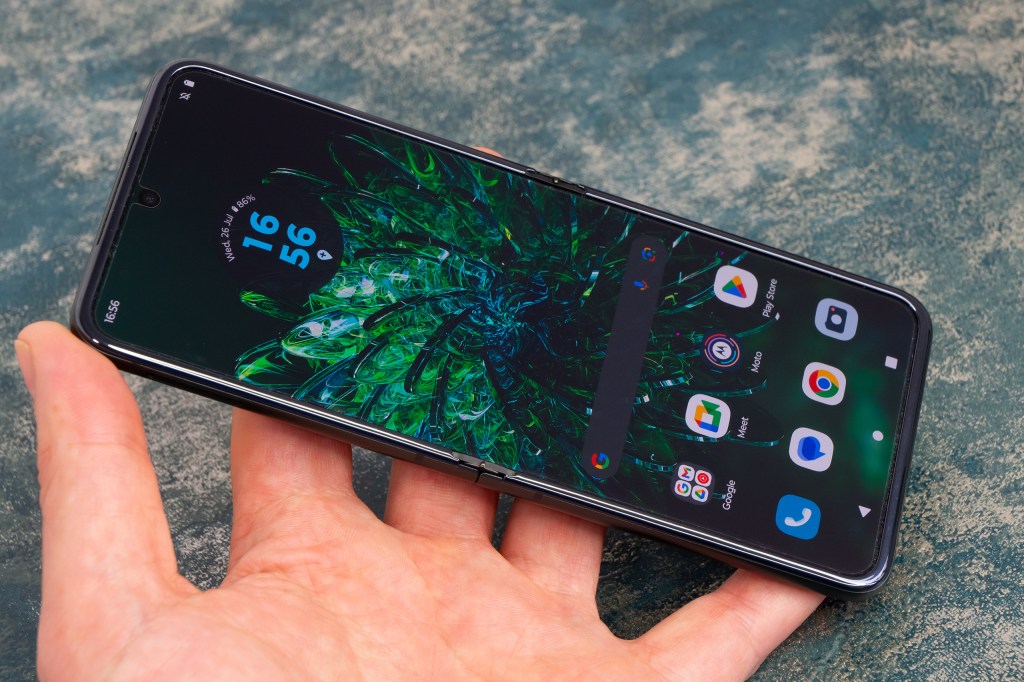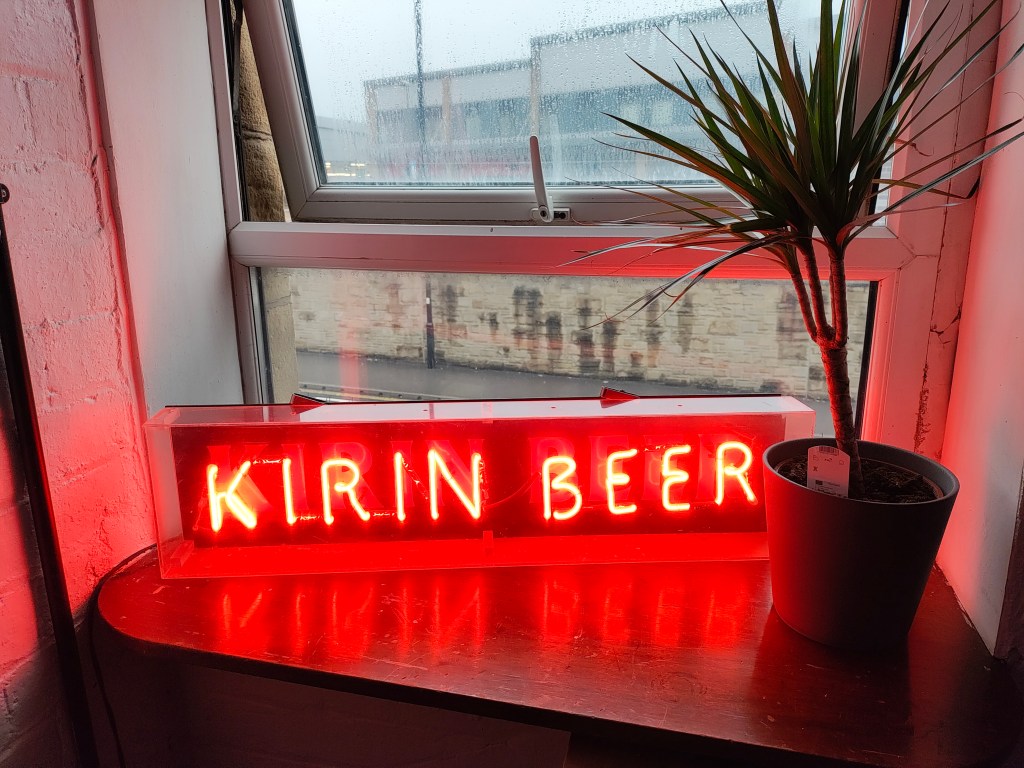The Motorola Razr 40 is the 2023 entry-level flip-phone from Motorola, priced at roughly $800 / £800. This makes it one of the more affordable folding phones available, with Motorola also offering the Razr 40 Ultra, at roughly $1099 / £1049. So how does the Motorola Razr 40 perform, and does it do enough to make it into the list of the best phones for photography?
Key Features at a glance:
- 64MP wide-angle camera, f/1.7, OIS, PDAF, Laser AF, 25mm equivalent
- 13MP ultra-wide-angle camera, f/2.2, AF, 1/3inch sensor, 16mm equivalent
- 32MP selfie camera, f/2.4, 25mm equivalent – outputs 8MP images
- 4K video at 30fps available from external/internal cameras
- 6.9inch AMOLED 144Hz screen, foldable
- 1.5inch sub-screen (external), Gorilla Glass Victus
- 4200mAh battery, 30W wired charging, 5W wireless
- 8/12GB, 128/256GB storage options
- Android 13
- 170 x 74 x 7.4mm (open) | 88.2 x 74 x 15.8mm (folded)
- 188.6g weight
Motorola Razr 40 Features
We review smartphones from the perspective of choosing a smartphone for it’s photography and camera performance, so we’ll be starting by looking at what the Motorola Razr 40 offers in terms of the cameras and what features are included for photography and video.
Folding phones tend to be smaller than standard phones (unless they’re folding tablets, like the Google Pixel Fold), and this means there’s a whole section in the middle of the phone dedicated to the folding mechanism.
This also means they have less space for cameras, and this is the case with the Motorola Razr 40 and 40 Ultra, with 2 external cameras, an ultra-wide and a wide-angle camera. There is no third telephoto (or other) camera, except for an internal selfie camera.
On the subject of cameras, the external screen on the Razr 40 means that you can use the main cameras as your selfie camera, and as this has a larger sensor (and autofocus) should give better results than the internal camera. Yay!
The cameras…
The main camera is a 64MP wide-angle with pixel-binning to produce 16MP images, with an f/1.7 aperture and optical image stabilisation (OIS), in comparison the Razr 40 Ultra features a 12MP camera with a brighter f/1.5 aperture. Autofocus is taken care of with Phase Detection AF (PDAF), as well as Laser AF.
The ultra-wide-angle camera is a 13MP unit, with an f/2.2 aperture, and 16mm equivalent. This also includes auto-focus, which will help with close-ups and more.
The internal selfie camera is a 32MP f/2.4 camera which uses pixel binning to give 8MP images. It’s capable of recording 4K video at 30fps.
Video recorded with the main (external) camera is recorded at 4K video and 30fps and includes a gyro-based electronic image stabilisation system, in addition to the optical image stabilisation.
The camera app
The camera app has a number of useful options, including on-screen options for 0.5x, 1x, and Macro – as though the macro option is a third camera, but it’s not. Considering this, it’s a shame there’s not an on-screen button for quick access to 2x zoom.
There’s a pro mode, with manual controls, letting you adjust a variety of settings, and the layout changes when you fold the phone, which can make it easy to use the phone as it’s own built-in mini tripod.

Motorola Razr 40 additional shooting modes. Photo Joshua Waller
When the phone is closed, you can twist the phone rapidly and this opens the camera app using the smaller exterior screen, and these are the standard 4:3 aspect ratio. On the 40 Ultra, this will give you square photos. Speaking of the small exterior screen, whilst we found this useful for quick status and time checks, we found it too small to be particularly useful for phone notifications, however as they say, your mileage may vary.
Design and Handling
Stereo speakers are impressively loud for a thin smartphone. Of course, bass response is not going to match larger speakers, but the results are better than expected.
There is no IP65/68 rating for water resistance, and instead the phone has a water repellent coating. Due to the folding mechanism, it would be very difficult for Motorola to make this phone completely waterproof in the same way as non-folding phones.

Motorola Razr 40 with small external screen. Photo Joshua Waller
There’s also no real protection for the internal screen, which due to needing to fold, can’t be protected by Gorrilla Glass of any kind. This means that it will be easy to scratch this if you’re not careful.
The exterior of the phone is made of a vegan “leather” which feels like a sort of rubbery / plastic type material. This helps give the phone some additional grip compared to glass phones, but the feel may not be to everyone’s liking. The sides of the phone are made from aluminium, and this gives a premium feel.

Motorola Razr 40 can fold to a variety of angles. Photo Joshua Waller
The folding screen may not be to everyone’s liking, and this can feel a little odd as you scroll up the screen, as you can feel the indentation as there’s a bump that goes in where the screen folds. The phone also makes a sort of squeaky creaky noise as you fold and unfold the phone.
And whilst the Snapdragon 7 Gen 1 may not be to the same flagship level as other phones (such as the Razr 40 Ultra), the phone does feel snappy and responsive when scrolling through apps and websites. It has a Geekbench score of 2928 (multi-core) and 1023 (single-core) using Geekbench 6.
There’s a 4200mAh battery, which is quite generous for a folding phone, as the Razr 40 Ultra has a smaller battery (at 3800mAh). The fingerprint sensor is built into the power button on the side.
The phone supports wireless charging at 5W, or for quicker charging, you can use the cable, and this gives charging at speeds up to 30W. It’s also available in a range of colours including white/cream, green/green and lilac/purple. We’re using the green version.
A charger and two part case are provided in the box, along with instructions not to remove the integrated screen protector.
Motorola Razr 40 Performance
In good lighting conditions, the Motorola Razr 40 produced good images, with nice looking colours. The main camera features optical image stabilisation (OIS) and this can help with low-light shooting. There were times when images came out looking dull and lacklustre, particularly when shooting in grey conditions.

Wide-angle camera. Here the bending phone was used as it’s own tripod. Photo Joshua Waller.
The camera’s HDR optimisation, in combination with the camera’s image processing, often made whites look grey, and this can make your whole image look overly grey and dull.
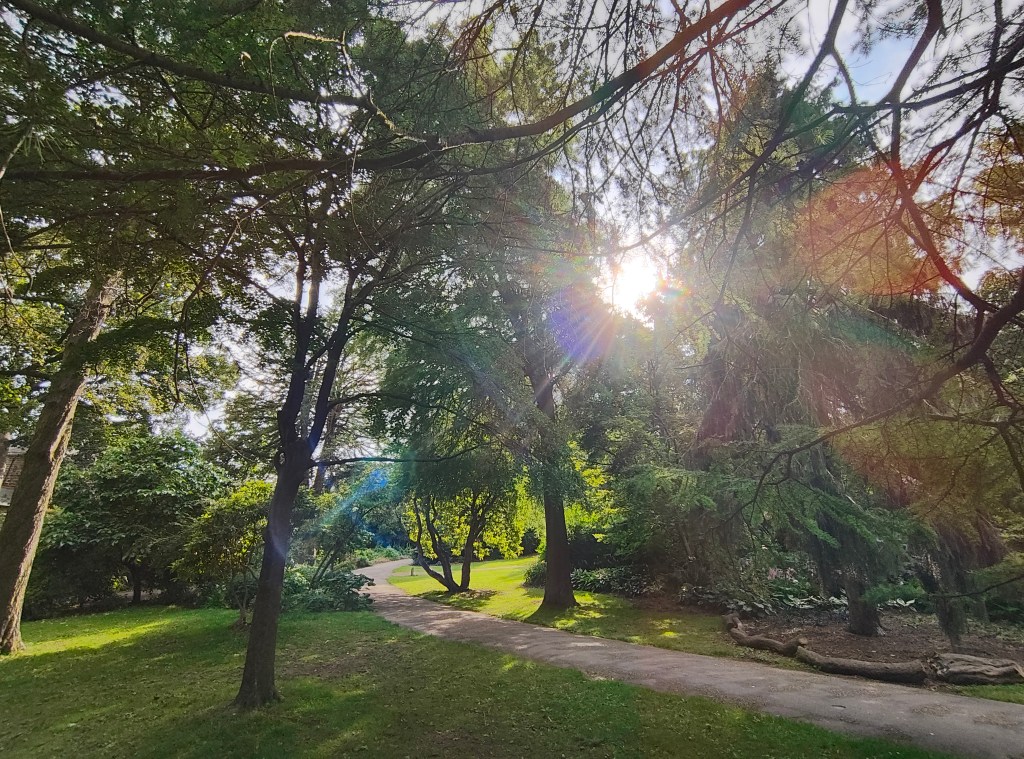
Flare can be an issue with both the standard and ultra-wide-angle cameras (ultra-wide-angle camera used here). Photo Joshua Waller
Flare was an issue at times, when shooting with the sun in the frame, but I wouldn’t say it’s particularly worse than many other mid-range phones.

Street cat. Here the Motorola Razr 40 has struggled with the dynamic range.
There’s a dedicated “Macro” option in the photo app, and this uses the ultra-wide angle camera with a crop. The ultra-wide-angle camera has autofocus, which means the camera can focus on close subjects. The results are reasonably good, but don’t offer the same pleasing look as macro and close-up photos taken with similarly priced phones such as the Samsung Galaxy S23+.

Macro performance is impressive. Photo Joshua Waller
When using the portrait mode you can adjust the level of background blur. There is no telephoto camera available, but you can use digital zoom up to 8x zoom.
As soon as light levels dropped, images were often far softer, and much more smudged than we expected, meaning they were lacking detail.
In lower light conditions, grey tones can be seen on people, and this isn’t a flattering look for your photos or your subjects. Detail was also lacking in some low-light scenes.
When using the portrait mode you can adjust the level of background blur. The following photo was taken in bright sunny conditions, using the main camera, and small external screen to frame the image.

Selfie using the main camera, framing can be tricky with the small screen as it crops the view so you don’t know what the final photo will show.
When using the portrait mode you can adjust the level of background blur. Using the internal 32MP selfie camera gives 8MP images, and these lack detail, particularly if you are shooting in low light conditions. Focus is fixed so there is an optimum distance needed for shots to be in focus.

Selfie using the internal camera gives an 8MP image with soft looking results, particularly in low-light.
Video recording
Video stabilisation is relatively good, with the camera recording stable footage when using the phone handheld. 4K video can be recorded using the external or internal cameras.
Value for Money
If you’re in the market for a folding a phone, then the Motorola Razr 40 is one of the cheapest folding phones available. However, at $/£800 it is definitely in the price range of other premium smartphones, but with only 2 main cameras, it doesn’t compete with the 3+ cameras found on other premium phones. Mid-range phones with 2-3 cameras on the back tend to start around the $400 to $600 mark, which goes to show how much of a premium you’re paying for the folding screen and mechanism.
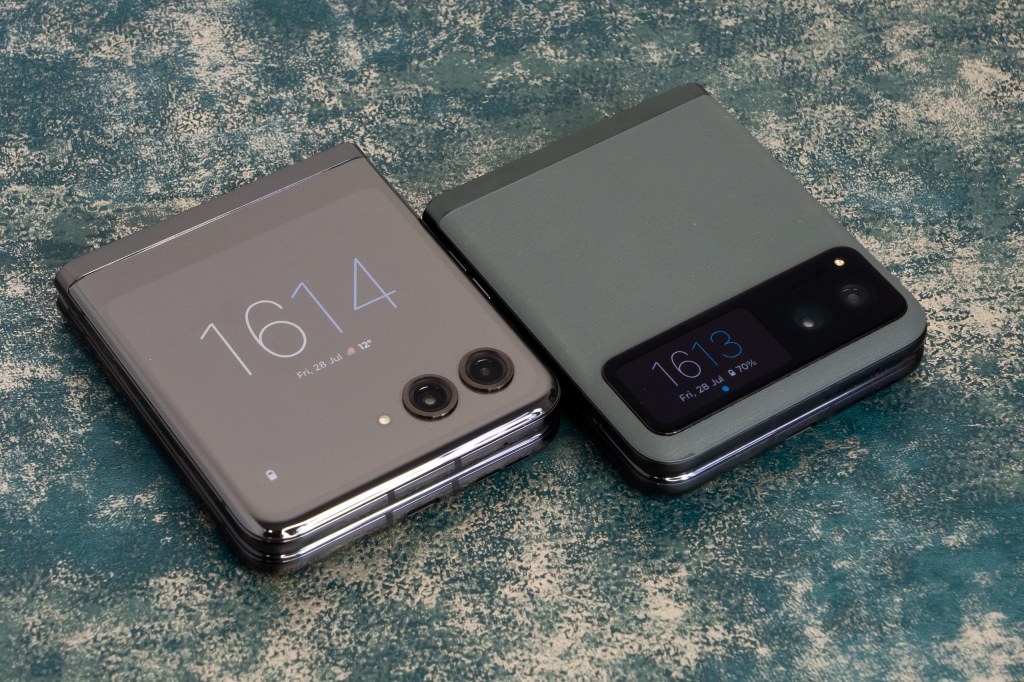
Motorola Razr 40 Ultra (left) next to Motorola Razr 40 (right). Photo: Joshua Waller
If a folding phone is what you want, then the Motorola Razr 40 is a neat device, and the price point is compelling, but for photographers, a traditional non-folding phone will offer much better value for money, with phones like the Samsung Galaxy S22, Samsung Galaxy A54 5G, and Google Pixel 7 being much cheaper.
Motorola Razr 40 Verdict
The Motorola Razr 40 makes a folding phone a more affordable option, compared to the higher prices of the Razr 40 Ultra, and Samsung’s folding phones. There are some benefits to photographers, as the phone can use used as it’s own stand, and you can use the main cameras for selfies, rather than the lower quality internal camera.
However, in comparison to non-folding phones, there is a lack of third telephoto camera, and this means you really do have to love the idea of a folding phone to go for this, rather than a standard phone, as you are paying a premium for this phone, but not getting a premium camera setup.
This means the Motorola Razr 40 is stuck in the awkward position of being expensive for a mid-range camera phone, and somewhat underwhelming when compared to flagship smartphones.
Images are generally okay, with some reasonable results possible, but there are times when HDR doesn’t work very well, and colours can look off in comparison to other phones, and a Samsung, Google, or iPhone is going to give better results.
The Motorola Razr 40 Ultra offers a much more useful, and impressive external screen, which can be used for apps, games, and as a better view for photography, but at the increased price, and still with a lack of third camera (and smaller battery), it’s not necessarily going to be the best choice for photographers.

Follow AP on Facebook, Twitter, Instagram, YouTube and TikTok.


